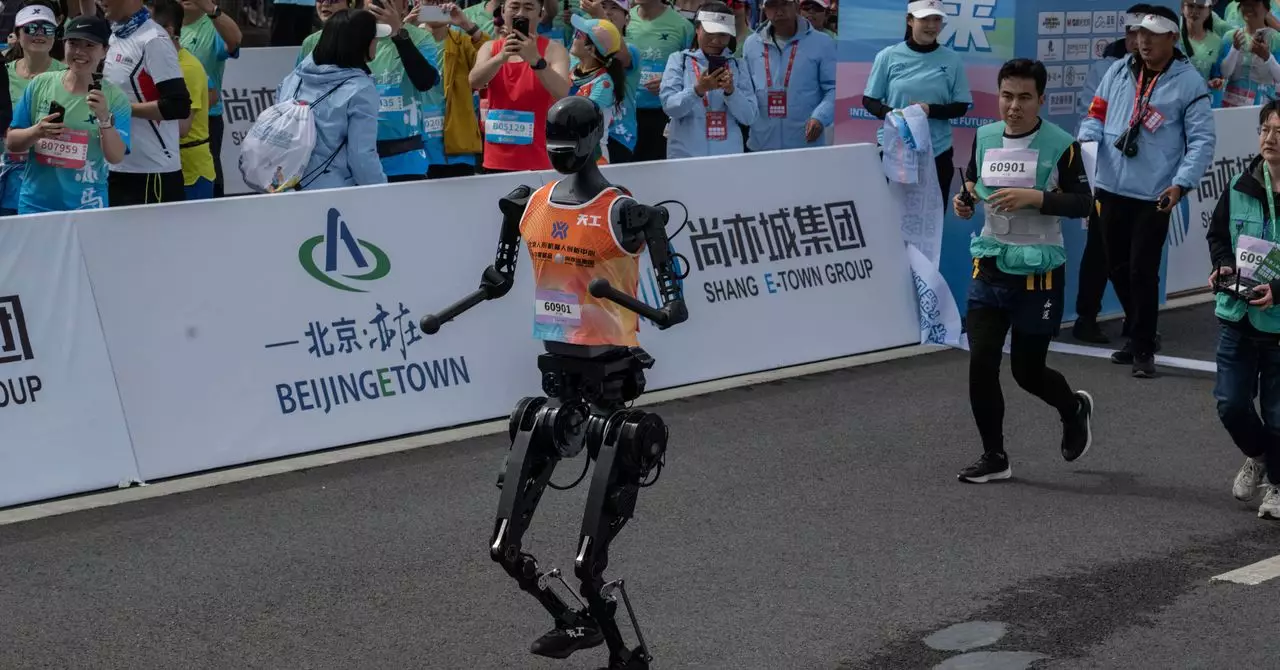In the excitement of robotic competitions, it is easy to be mesmerized by humanoid robots that dance, spin, and mimic human actions. The spectacle may grab headlines and generate a buzz among spectators, but it presents a filtered view of what humanoid robots can genuinely offer in practical applications. Experts like Fern emphasize that these capabilities outperforming mere human-like activities fail to account for the demands of real-world scenarios. Run a marathon, dance at public events, or execute karate moves—all fun and visually engaging feats—yet they don’t signify substantial advancements for the field of robotics. The market doesn’t need robots showcasing entertainment gimmicks; it needs them to tackle challenges that require versatility and autonomy.
As Fern points out, the future of humanoid robotics, especially in places where innovation thrives such as China, seems poised to swing towards utility over performance art. This is a necessary and crucial pivot. The audience might soon tire of seeing humanoids displaying limited patterns of behavior, with the same dance steps repeated ad nauseam. The anticipated shift towards more applicable tasks could emphasize robots’ integration into daily life, highlighting their potential to assist in settings beyond the confines of racetracks or stages.
The Race: A Mixed Bag of Performance
Humanoid robots come in various shapes and sizes, adding an element of intrigue during competitions. Each competitor in a recent race featured distinct appearances, ranging from a charmingly diminutive 2 feet and 5 inches to a more robust 5 feet 9 inches, representing the broad spectrum of humanoid design. Yet, the allure of such diversity might be eclipsed by performance issues, as many entrants struggled to deliver even the basics of movement. For instance, the winner of the contest, Tiangong Ultra, and its fellow contender, the N2 robot, maintained a consistent if unremarkable pace, contrasting sharply with their less successful competitors, who floundered under pressure.
Take Huanhuan, for example—a humanoid that attempted to showcase sophisticated design but instead moved at an excruciatingly slow crawl. The real-life implications of such failures are important; if robots struggle in controlled environments, how adequately could they serve in scenarios requiring more complex tasks? Meanwhile, Shennong—a model reminiscent of both Gundam and a Frankenstein’s monster—took competition chaos to new cinematic heights. Its spectacular failure involved not just poor mobility but also an amusing twirl into obstacles, showcasing the precarious balance of humanoid operation.
Human Assistance: The Backbone of Robotics
Fundamentally, the fragility of these robots reveals another glaring truth: despite advancements, many require human intervention. The reliance on operators during the race not only underscores the limitations of current humanoid capabilities but also introduces an interesting dynamic between human and machine. With participants relying on control panels and tactical guidance to navigate the obstacles of the track, the so-called “autonomy” of the robots is called into question.
Moreover, the sight of operators holding robots on pet leashes might invoke laughter, but it raises a serious conversation about the real utility of these advanced machines. Are we merely projecting human traits onto a flawed process? As Fern highlights, they operate more like remote-controlled cars than independent entities—exposing the gap between aspiration and reality.
The Role of Improvisation in Robotic Competitions
A telling aspect of the competition was the apparent necessity for improvisation. The best-laid plans fell victim to mechanical failures, and in those moments, duct tape emerged as an unexpected hero. Fixing wandering robot limbs or reinforcing fragile parts with a simple adhesive reflects a broader truth about the unpredictability of robotics. The ability to adapt and make quick repairs may now be as crucial as the design and engineering of the robots themselves. This reliance on duct tape underscores a point—while humanoid robots are developed with sophisticated technology, they still face vulnerabilities in unpredictable conditions.
This phenomenon compels a shift in perception—clever engineering is commendable, but it’s the practical, adaptable solutions that are genuinely transformative. As we celebrate humanoid creativity, we must also direct attention toward capability enhancements that foster practical, not performative, outcomes.
In a future where humanoid robots must step beyond the spectacle, research and investment should target functionality. The intricacies of genuine human-robot interaction must gain precedence, honing robots that can perform reliably in practical situations—a vision that resonates far beyond the overhyped stages of entertainment.

